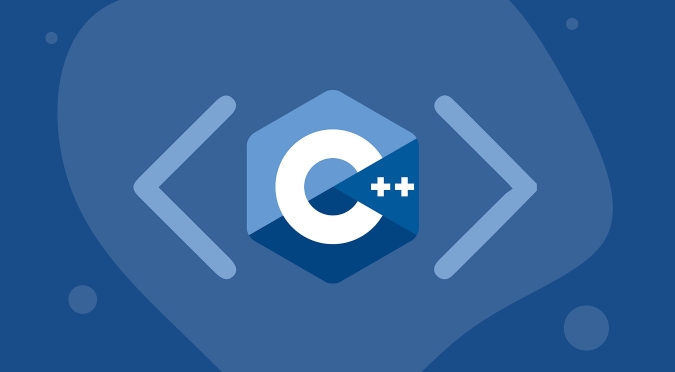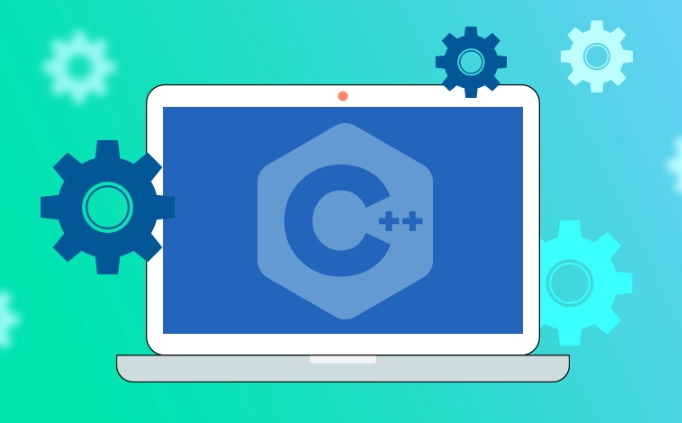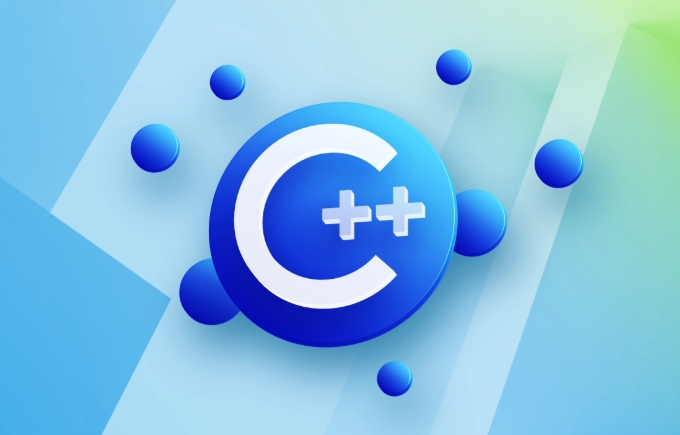Can you explain classes and objects in C with an example?
Jun 29, 2025 am 12:54 AMIn C, a class is a user-defined data type, containing data and functions, and an object is an instance of a class. Classes are like blueprints, which define the structure and behavior of objects. For example, class Car defines the brand, model, year and method of starting the engine; objects are specific examples created based on the blueprint, such as myCar and yourCar represent different car objects and have their own data copies. Using classes and objects can improve the organization, reusability, abstraction and maintainability of the code, and is suitable for scenarios such as player character modeling in game development. In addition, the access modifier controls member access rights, the constructor is used to initialize objects, and the class also supports inheritance to build a hierarchy.

Sure! Let's break it down simply. In C , a class is like a blueprint, and an object is what you build from that blueprint. If you're new to object-oriented programming, this concept can feel abstract at first, but once you get the hang of it, it becomes second nature.

What is a class?
A class is a user-defined data type that contains both data (variables) and functions (methods). It defines what an object of that type will look like and how it will behave.

Think of a class as a recipe — it tells you what ingredients (data) and steps (functions) are needed, but on its own, it doesn't "do" anything. You need to create something from it — an object.
Here's a simple example:

class Car {
public:
string brand;
string model;
int year;
void startEngine() {
cout << brand << " " << model << "'s engine started." << endl;
}
}; This Car class has three variables ( brand , model , year ) and one function ( startEngine ).
What is an object?
An object is an instance of a class. When you create an object, you're basically using the class blueprint to make a real thing in memory.
Using the class above, here's how you'd create an object:
Car myCar; myCar.brand = "Toyota"; myCar.model = "Corolla"; myCar.year = 2020; myCar.startEngine(); // Output: Toyota Corolla's engine started.
In this case, myCar is an object of the Car class. You can create multiple objects from the same class:
Car yourCar; yourCar.brand = "Honda"; yourCar.model = "Civic"; yourCar.year = 2022; yourCar.startEngine(); // Output: Honda Civic's engine started.
Each object has its own copy of the class members (variables and functions), so changes made to one object don't affect another.
Why use classes and objects?
- Organization : Classes let you group related data and functionality together.
- Reusability : Once you define a class, you can reuse it to create many similar objects.
- Abstract : You can hide complex details and expose only what's necessary through public methods.
- Maintainability : Code becomes easier to read, debug, and update when grouped logically into classes.
For example, if you're building a game, you might have a Player class. Every player character in the game would be an object of that class, each with different stats but sharing the same basic structure.
A few more things to know
- Access specifiers like
public,private, andprotectedcontrol who can access which parts of a class. - You can also define constructors — special functions that run automatically when an object is created.
- Classes can be extended (inherited) to form hierarchies — but that's for another time.
So yeah, classes and objects help you model real-world concepts in code in a clean, structured way. They're not hard once you get used to thinking in terms of blueprints and instances.
Basically that's it.
The above is the detailed content of Can you explain classes and objects in C with an example?. For more information, please follow other related articles on the PHP Chinese website!

Hot AI Tools

Undress AI Tool
Undress images for free

Undresser.AI Undress
AI-powered app for creating realistic nude photos

AI Clothes Remover
Online AI tool for removing clothes from photos.

Clothoff.io
AI clothes remover

Video Face Swap
Swap faces in any video effortlessly with our completely free AI face swap tool!

Hot Article

Hot Tools

Notepad++7.3.1
Easy-to-use and free code editor

SublimeText3 Chinese version
Chinese version, very easy to use

Zend Studio 13.0.1
Powerful PHP integrated development environment

Dreamweaver CS6
Visual web development tools

SublimeText3 Mac version
God-level code editing software (SublimeText3)

Hot Topics
 C Polymorphism : is function overloading a kind of polymorphism?
Jun 20, 2025 am 12:05 AM
C Polymorphism : is function overloading a kind of polymorphism?
Jun 20, 2025 am 12:05 AM
Yes, function overloading is a polymorphic form in C, specifically compile-time polymorphism. 1. Function overload allows multiple functions with the same name but different parameter lists. 2. The compiler decides which function to call at compile time based on the provided parameters. 3. Unlike runtime polymorphism, function overloading has no extra overhead at runtime, and is simple to implement but less flexible.
 What Are the Different Kinds of Polymorphism in C ? Explained
Jun 20, 2025 am 12:08 AM
What Are the Different Kinds of Polymorphism in C ? Explained
Jun 20, 2025 am 12:08 AM
C has two main polymorphic types: compile-time polymorphism and run-time polymorphism. 1. Compilation-time polymorphism is implemented through function overloading and templates, providing high efficiency but may lead to code bloating. 2. Runtime polymorphism is implemented through virtual functions and inheritance, providing flexibility but performance overhead.
 C : Is Polymorphism really useful?
Jun 20, 2025 am 12:01 AM
C : Is Polymorphism really useful?
Jun 20, 2025 am 12:01 AM
Yes, polymorphisms in C are very useful. 1) It provides flexibility to allow easy addition of new types; 2) promotes code reuse and reduces duplication; 3) simplifies maintenance, making the code easier to expand and adapt to changes. Despite performance and memory management challenges, its advantages are particularly significant in complex systems.
 C Destructors: Common Errors
Jun 20, 2025 am 12:12 AM
C Destructors: Common Errors
Jun 20, 2025 am 12:12 AM
C destructorscanleadtoseveralcommonerrors.Toavoidthem:1)Preventdoubledeletionbysettingpointerstonullptrorusingsmartpointers.2)Handleexceptionsindestructorsbycatchingandloggingthem.3)Usevirtualdestructorsinbaseclassesforproperpolymorphicdestruction.4
 Polymorphism in C : A Comprehensive Guide with Examples
Jun 21, 2025 am 12:11 AM
Polymorphism in C : A Comprehensive Guide with Examples
Jun 21, 2025 am 12:11 AM
Polymorphisms in C are divided into runtime polymorphisms and compile-time polymorphisms. 1. Runtime polymorphism is implemented through virtual functions, allowing the correct method to be called dynamically at runtime. 2. Compilation-time polymorphism is implemented through function overloading and templates, providing higher performance and flexibility.
 C tutorial for people who know Python
Jul 01, 2025 am 01:11 AM
C tutorial for people who know Python
Jul 01, 2025 am 01:11 AM
People who study Python transfer to C The most direct confusion is: Why can't you write like Python? Because C, although the syntax is more complex, provides underlying control capabilities and performance advantages. 1. In terms of syntax structure, C uses curly braces {} instead of indentation to organize code blocks, and variable types must be explicitly declared; 2. In terms of type system and memory management, C does not have an automatic garbage collection mechanism, and needs to manually manage memory and pay attention to releasing resources. RAII technology can assist resource management; 3. In functions and class definitions, C needs to explicitly access modifiers, constructors and destructors, and supports advanced functions such as operator overloading; 4. In terms of standard libraries, STL provides powerful containers and algorithms, but needs to adapt to generic programming ideas; 5
 What Are the Various Forms of Polymorphism in C ?
Jun 20, 2025 am 12:21 AM
What Are the Various Forms of Polymorphism in C ?
Jun 20, 2025 am 12:21 AM
C polymorphismincludescompile-time,runtime,andtemplatepolymorphism.1)Compile-timepolymorphismusesfunctionandoperatoroverloadingforefficiency.2)Runtimepolymorphismemploysvirtualfunctionsforflexibility.3)Templatepolymorphismenablesgenericprogrammingfo
 C Polymorphism: Coding Style
Jun 19, 2025 am 12:25 AM
C Polymorphism: Coding Style
Jun 19, 2025 am 12:25 AM
C polymorphismisuniqueduetoitscombinationofcompile-timeandruntimepolymorphism,allowingforbothefficiencyandflexibility.Toharnessitspowerstylishly:1)Usesmartpointerslikestd::unique_ptrformemorymanagement,2)Ensurebaseclasseshavevirtualdestructors,3)Emp






